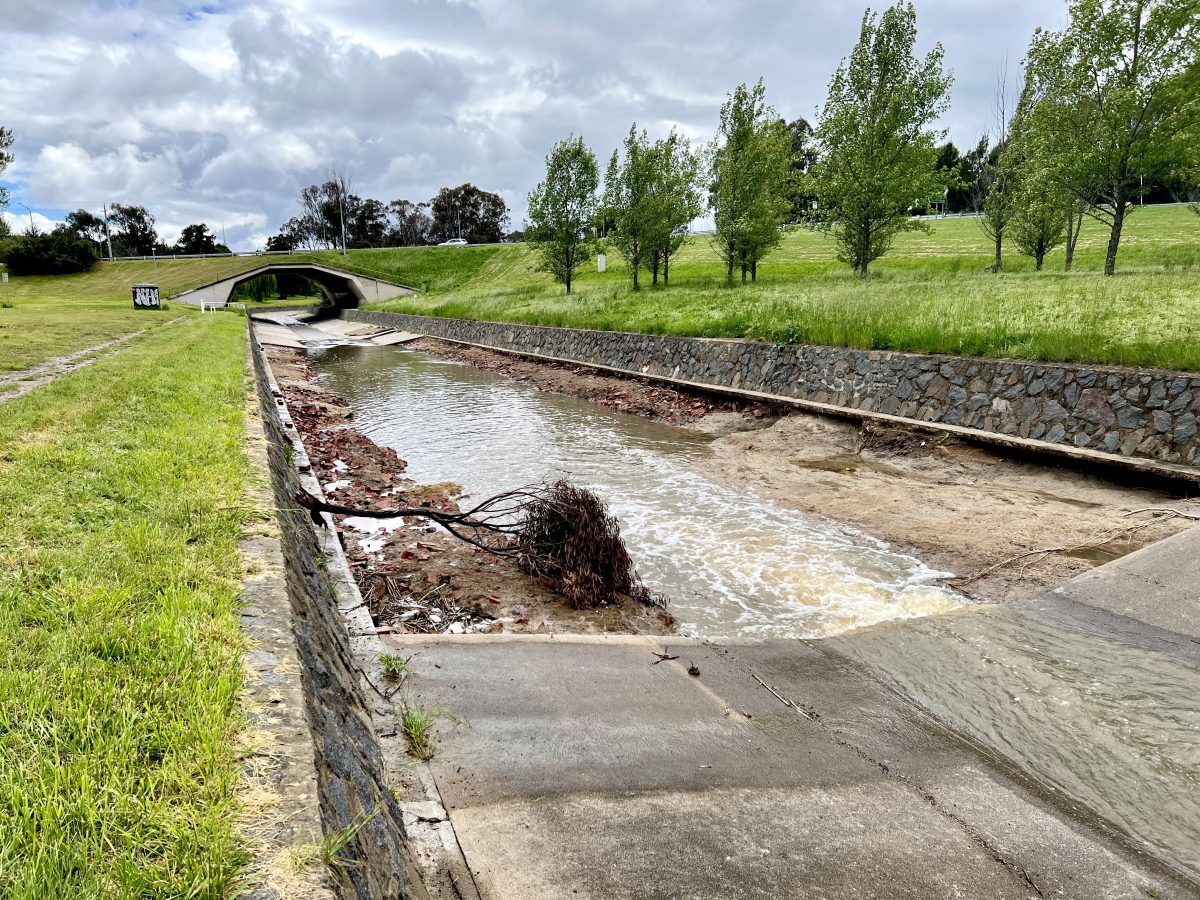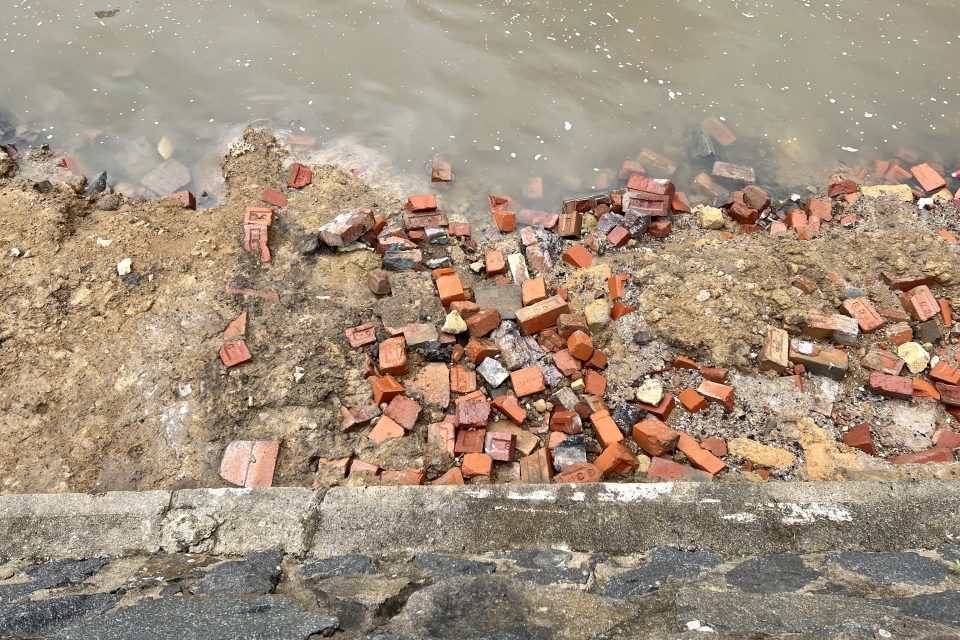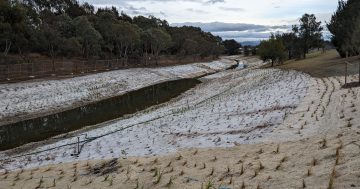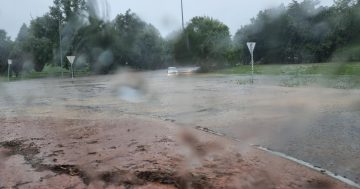
Yarralumla Creek stormwater channel damage, Curtin. Photo: James Coleman.
If you thought the roads were bad after all the rain we’ve been having, it turns out even infrastructure in the ACT designed to cope with large amounts of water is struggling.
Several tonnes of concrete panels in the Yarralumla Creek near Carruthers Street in Curtin were lifted and carried downstream by floodwaters over the weekend.
The deluge has left a 60-metre-long section of the stormwater channel exposed, revealing the mud and rubble below, as well as deep scrapes in the remaining concrete.
The ACT Government was alerted by reports through the Fix My Street online portal on Sunday (23 October) and crews from City Services and Roads ACT were promptly sent out to inspect.
Roads ACT Senior Director of Environment and Utilities Jennie Gillies said they’ve been there every day since due to the scope of the damage.
“The largest affected area is approximately 60 metres long, where that whole section has been completely dislodged,” she said.
“There are also several smaller sections with the same issue where the panels are lifting. And as the panels moved downstream, they also damaged other parts of the lining and stone pitching.”
Ms Gillies said there has been so much rain over the last three years that the ground is saturated at least a metre beneath the surface and the combination of high-volume rain events and that level of saturation means there is pressure on both sides of the concrete panels.
“This pressure basically popped the panels out,” she said.
The focus now is on removing the dislodged panels before they do further damage to not only the lining but also bridge pylons, especially with more showers forecast over the coming days. The panels must be replaced soon to avoid the water washing away the exposed dirt and lifting the remaining panels.
But first, Ms Gillies said they have to clean away the underlying rubble, which includes hundreds of the iconic red ‘Canberra’ bricks.
“Back in the late 1960s and early 1970s, when Woden and the creek were being constructed, builders’ rubble was commonly used as infill. The concrete panels were then put on top of it.”
Yarralumla Creek is one of Canberra’s oldest stormwater channels, with a catchment that extends 34 square kilometres from the Wanniassa Hills Nature Reserve to the Molonglo River downstream of Scrivener Dam.
The catchment’s topography leaves it vulnerable to localised flooding, especially during intense storms.






On Australia Day 1971, seven people drowned during an extreme storm in the upper catchment. Most of the victims were swept into Yarralumla Creek at a temporary low-level crossing in place while Woden Valley was being developed.
In the past 10 years alone, the creek has flooded four times – in 2005, 2007, 2011 and 2014 – all with no more than six hours’ warning between the onset of rainfall and the arrival of the flood peak.
Ms Gillies said 2022 is the first time a stormwater channel has suffered damage on this scale.
“We’ve had a couple of panels pop out here and there but never over an area of 60 metres,” she said.
“This is a much larger job than we’re used to, so it’s a matter of getting a window of dry weather so we can actually get in there and fix it.”
On the roads, crews face an equally tough time with an “exponential increase” of potholes.
“We’re fixing about 1000 potholes a week on Canberra’s roads at the moment,” Ms Gillies said.
Roads ACT has “revved up” their crews accordingly, with major arterial roads triaged as most urgent. The most dangerous are plugged with a cold mix within 48 hours of a report and then revisited with a more durable hot mix once the rain lets up.
“Again, it’s just about getting that window of dry weather so the surface of the pothole is dry and we can use hot mix.”
The community can report damage to stormwater channels, roads and other government assets online via Fix My Street. Alternatively, they can phone Access Canberra on 13 22 81.















